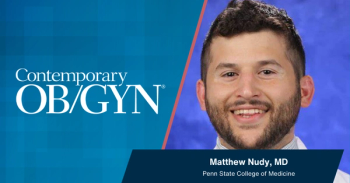
Highlights from the 2020 San Antonio Breast Cancer Symposium
Following the 2020 San Antonio Breast Cancer Symposium, Erika P. Hamilton, MD, and William J. Gradishar, MD, shared their key takeaways and insights from the most impactful data presented during this year’s meeting.
The San Antonio Breast Cancer Symposium (SABCS) is held annually in the city of San Antonio to share knowledge of growing trends and new data in the field of breast cancer, but in light of the coronavirus disease 2019 (COVID-19) pandemic, organizers took to a virtual platform for the 2020 SABCS.
Despite the challenges oncologists and researchers faced throughout the year due to complications of the viral infection on clinical practice and patient care, a plethora of new data and trial updates were shared during the meeting.
With a complete focus on breast cancer during this annual meeting, oncologists shared findings for a variety of subpopulations of breast cancer, including those with HER2-negative breast cancer, hormone receptor (HR)-positive disease, and triple-negative breast cancer (TNBC).
“A trend that's emerging more and more in oncology is that not all tumors are created equal,” Erika P. Hamilton, MD, director of the breast cancer and gynecologic cancer research program at the Sarah Cannon Research Institute, told Targeted Oncology. “We've known, for a long time, that breast cancer is broken down into HER2-positive, triple-negative, and HR-positive, but within those classes, there were even great presentations as well, kind of breaking those [groups] down by different subtypes and different gene expression.”
By categorizing patients into these subgroups and further refining these groups into even more specific populations based on molecular features of the tumor and patient characteristics, physicians can provide more individualized care.
Since the 2019 SABCS meeting, 6 therapies have been granted approved indications from the FDA for the treatment of breast cancer, and this continues to demonstrate the need for profiling patients to personalize treatment. In the HER2-positive population alone, physicians have 3 new treatments to consider following approvals in 2020, including the combination of neratinib (Nerlynx) plus capecitabine for patients adult patients with advanced or metastatic HER2-positive breast cancer,1 tucatinib (Tukysa) with trastuzumab and capecitabine for adult patients with advanced unresectable or metastatic HER2-positive breast cancer,2 and more recently, margetuximab-cmkb (Margenza) for adult patients with metastatic HER2-positive breast cancer following 2 or more prior anti-HER2 regimens, at least 1 of which was for metastatic disease.3 The TNBC population saw 2 new approvals as well, including the combination of pembrolizumab (Keytruda) with chemotherapy and the antibody-drug conjugate (ADC) sacituzumab govitecan (Trodelvy).
Among the data presented at this year’s SABCS, experts reviewed data from subgroup analyses and updated findings for these approved regimens, as well as others that appear promising in the pipeline for the treatment of patients with breast cancer.
“I think for any of us who have been practicing for a long time, we've seen the evolution of therapies in breast cancer go from a handful of things we had available for patients to a myriad of things in each of the different subsets of breast cancer,” William J. Gradishar, MD, chief of hematology and oncology, department of medicine, Betsy Bramsen Professorship of Breast Oncology, professor of medicine (hematology and oncology), Northwestern University's Feinberg School of Medicine, told Targeted Oncology during a discussion on the most impactful data from the meeting.
“In each of those areas, in the very recent past, there's been a marked expansion of therapeutic options. We still have a lot of work to do, patients are still dying of metastatic breast cancer, but we've made significant progress and not only preventing recurrences from developing in patients with early-stage disease, but we've also extended the survival of patients who have metastatic disease,” Gradishar added.
“It's conceivable that, in the future, we may be able to extend that significantly as we get smarter in how we understand the disease and apply the therapies appropriately.”
Exciting Data from the 2020 Annual SABCS
The phase 3 monarchE clinical trial (NCT03155997) demonstrated prolonged invasive disease-free survival (iDFS) with abemaciclib (Verzenio) in combination with standard endocrine therapy as treatment of patients with high-risk, early HR-positive, HER2-negative breast cancer.
Findings from this study were initially presented during the 2020 European Society for Medical Oncology (ESMO) Virtual Program, demonstrated the CDK4/6 inhibitor significantly reduced the risk of invasive disease.4 The updated findings presented during SABCS included longer follow-up.
“The trial was designed in such a way that you could look at the primary end points once there were a certain number of events reached, and at this point, with only 4 additional months for 19 months of follow-up, those events have been reached,” Gradishar noted.
Findings from SABCS showed a 28.7% reduction in the risk of invasive disease recurrence or death with the combination. The iDFS benefit was statistically significant and clinically meaningful after 395 events and a median follow-up of 19.0 months (HR, 0.713; 95% CI, 0.583-0.871; 2-sided P = .0009). The 2-year iDFS rate was 92.3% with the combination compared with 89.3% with endocrine therapy alone, which translated to a 3.0% difference.
“We also had better insights into the toxicity,” said Gradishar on these extended follow-up data. “Even if patients had to discontinue [treatment], most of the discontinuations were in the first 5 months, so if you got that far, it seemed like most patients continued. However, dose reductions or delays were seen in 50% to 60% of patients, so it's the first trial that clearly shows a benefit. It's still early, and some have criticized the fact that we're reporting results so early, but that's how the trial was designed statistically.”
Treatment with ribociclib (Kisqali) and endocrine therapy improved overall survival (OS) and chemotherapy delay in patients with HR-positive, HER2-negative breast cancer, according to the findings from the phase 3 MONALEESA-7 clinical trial (NCT02278120).
The median OS was 58.7 months with the combination compared with 48.0 months with placebo plus endocrine therapy (HR, 0.763; 95% CI, 0.608-0.956), which translated to a 24% relative reduction in the risk of death with the addition of the CDK4/6 inhibitor to endocrine therapy. The findings observed in this study appeared consistent with those observed previously.
Moreover, these findings demonstrated a median OS of 58.7 months with the ribociclib regimen among patients who had received a nonsteroidal aromatase inhibitor compared with 47.7 months with placebo (HR, 0.798; 95% CI, 0.615-10.4), according to data from a subgroup analysis. These findings also demonstrated the median OS was not reached among patients who received tamoxifen compared with 49.3 months with placebo (HR, 0.705; 95% CI, 0.453-1.097).
The 5-year iDFS, as well as OS, were improved with the addition of chemotherapy to endocrine therapy in premenopausal but not postmenopausal women with HR-positive, HER2-negative, lymph node-positive breast cancer who had a recurrence score between 0 and 25, according to the prespecified interim analysis of the phase 3 RxPONDER study (NCT01272037).
“This looked at the issue of early-stage breast cancer patients with node-positive disease who are HR-positive, trying to determine if patients with up to 3 nodes uniformly must get chemotherapy in addition to anti-hormone therapy,” said Gradishar. “We learned from that presentation that the answer is no, though in younger patients less than the age of 50, many of those patients with recurrent scores up to 25 may still need chemotherapy. We also found out that in many patients, particularly older patients, they’re not going to benefit from chemotherapy, so this extends what we knew in the past because we could have uniformly recommended almost all patients with node-positive disease to get chemotherapy. Now, again, we’re able to refine our way of thinking about that.”
Among the premenopausal population, the 5-year iDFS rate was 94.2% with the combination regimen versus 89.0% with endocrine therapy alone, reflecting an absolute difference of 5.2% (adjusted HR, 0.54; 95% CI, 0.38-0.76; P = .0004). In the postmenopausal patients, this rate was 91.6% with the combination versus 91.9% in the control arm (adjusted HR, 0.97; 95% CI, 0.78-1.22; P = .82).
“This trial was huge in terms of the number of patients. It is the trial that we had never waiting for, for some time, because it compliments the TAILORx trial, which had been published in the past, helping us define who the node-negative patients with HR-positive disease are who could avoid chemotherapy or, who need chemotherapy,” said Gradishar. “The RxPONDER trial is an effort to look at lower nodal burden patients with 1 to 3 nodes and determine if they, too, with HR-positive disease uniformly require chemotherapy or if we can avoid it. We were able to show in that trial, that there's a huge chunk of the breast cancer patient population who would have otherwise been receiving chemotherapy who may now avoid it, and the outcome is exactly the same.”
The phase 3 TAILORx study (NCT00310180) previously demonstrated that adjuvant endocrine therapy alone is sufficient for patients with HR-positive, HER2-negative early-stage breast cancer who have an intermediate risk of distant recurrence compared with endocrine therapy with chemotherapy, the adjuvant treatment alone achieving noninferiority to the chemoendocrine approach.5
Treatment with the novel oral taxane tesetaxel in combination with a reduced dose of capecitabine (Xeloda) in patients with HER2-negative, HR-positive metastatic breast cancer resulted in an improvement compared with the FDA-approved dose of capecitabine alone in the phase 3 CONTESSA study (NCT04483557).
“I thought tesetaxel was an interesting drug, but I'm not so sure that people would necessarily be giving tesetaxel plus capecitabine because we tend to use single agents. However, if you're able to give something orally and you're able to give it once every 3 weeks, it may be an attractive palliative medication in the metastatic disease setting, and it may be something that could be combined with HER2 agents, even subcutaneously so nothing is IV,” Gradishar noted on this abstract.
After a median follow-up of 13.9 months, the median progression-free survival (PFS) was 9.8 months with the combination compared with 6.9 months with capecitabine alone, which translated to a 2.9-month improvement (HR, 0.716; 95% CI, 0.573-0.895; P = .003). The safety profile appeared manageable that was consistent with what has been previously observed in clinical trials of the combination.
“There are other are oral taxanes in development, some less user-friendly where you have to administer the agent with another agent to ensure that you're getting sufficient drug in,” Gradishar said. “In this case, tesetaxel could be administered every 3 weeks, which makes it attractive. There's no additional drug that has to be given with it, and the effectiveness of tesetaxel combined with capecitabine proved to be more effective in this metastatic disease setting than simply giving capecitabine alone.”
The ADC sacituzumab govitecan demonstrated clinical benefit compared with physician’s choice of therapy in patients with metastatic TNBC, irrespective of Trop-2 expression. Greater efficacy was observed among those with a medium or high Trop-2 score in the phase 3 ASCENT study (NCT02574455).
“This demonstrated that sacituzumab govitecan was better than treatment of physician's choice. The presentation looked at the biomarkers and specifically the question that's often been raised of, does the level of Trop -2 that's expressed have any impact on the likelihood of benefiting from says sacituzumab govitecan?” Gradishar explained. “In other words, if you're targeting Trop -2 and the expression is low, are you less likely to respond or not respond at all, and if you're higher, you must be much more likely to respond.”
The median PFS was higher in patients who received the ADC compared with those who were given physician’s choice, across all subgroups of Trop-2 analyzed. In the Trop-2 High subgroup, the median PFS was 6.9 months with the sacituzumab govitecan versus 2.5 months in the control arm, and in the Trop-2 medium subgroup, the median PFS was 5.6 months and 2.2 months, respectively, while the median in the Trop-2 low subset was 2.7 months versus 1.6 months.
“It didn’t matter what level of Trop -2 expressed; you are going to benefit from sacituzumab govitecan compared to treatment of physician’s choice. The other thing they looked at is, did it make any difference whether you had a BRCA mutation or not? The numbers were small, but it appeared that it didn't make any difference. You responded regardless of whether the mutation was present or not.” Gradishar said. “I think what all of this information tells us is that we probably shouldn't be looking at Trop -2 expression. If you're going to use the drug in TNBC, you don't need to know that. Patients are going to respond.”
According to the findings from the phase 3 KK-ORAX-001 clinical trial, oral paclitaxel plus encequidar achieved a 26.5% reduction in the risk of death in patients with metastatic breast cancer compared with intravenous paclitaxel. The median OS in the modified intention-to-treat (mITT) population was 23.3 months with the combination versus 16.3 months in the control arm (HR, 0.735; 95% CI, 0.556-0.972; P = .0262).
In addition, these findings demonstrated the median PFS in the mITT population was 8.4 months with the combination versus 7.4 months with IV paclitaxel, which translated to a 26% reduction in the risk of disease progression or death (HR, 0.739; 95% CI, 0.561-0.974; P =.0223).
A New Drug Application for the combination of
The phase 2 DESTINY-Breast01 study (NCT03248492) demonstrated that patients with HER2-positive metastatic breast cancer who were treated with fam-trastuzumab deruxtecan-nxki (Enhertu) had continued to experience extended durable responses and OS rates, and the therapy appeared to have a tolerable toxicity profile.
With an additional 9.4 months of follow-up, investigators found the median duration of response was 20.8 months, and the 12- and 18-month OS rates were 85% (95%, 79%-90%) and 74% (95% CI, 67%-80%), respectively. Although data were still immature, the preliminary median OS was 24.6 months (95% CI, 23.1–NE). The median PFS was 19.4 months (95% CI, 14.1-not evaluable [NE]).
The
This article was originally published on
__
References:
1. Puma Biotechnology receives U.S. FDA approval of supplemental new drug application for neratinib to treat HER2-positive metastatic breast cancer. News release. Puma Biotechnology. February 26, 2020. Accessed December 18, 2020. https://bit.ly/2TfqDmc
2. Seattle Genetics announces u.s. FDA approval of Tukysa™ (tucatinib) for people with advanced unresectable or metastatic her2-positive breast cancer. News release. Seattle Genetics. April 17, 2020. Accessed December 18, 2020. https://bit.ly/2xtQeB
3. MacroGenics announces FDA approval of margenza™ for patients with pretreated metastatic HER2-positive breast cancer. News release. MacroGenics, Inc. December 16, 2020. Accessed December 18, 2020. https://bit.ly/38afdI3
4. Johnston SRD, Harbeck N, Hegg R, et al. Abemaciclib combined with endocrine therapy for the adjuvant treatment of HR+, HER2-, node-positive, high risk, early breast cancer (monarchE). Ann Oncol. 2020;31(4). Abstract: LBA5_PR.
5. Sparano JA, Gray RJ, Wood WC, et al. TAILORx: phase III trial of chemoendocrine therapy versus endocrine therapy alone in hormone receptor-positive, HER2-negative, node-negative breast cancer and an intermediate prognosis 21-gene recurrence score. J Clin Oncol 2018;36(suppl; abstr LBA1).
Newsletter
Get the latest clinical updates, case studies, and expert commentary in obstetric and gynecologic care. Sign up now to stay informed.










